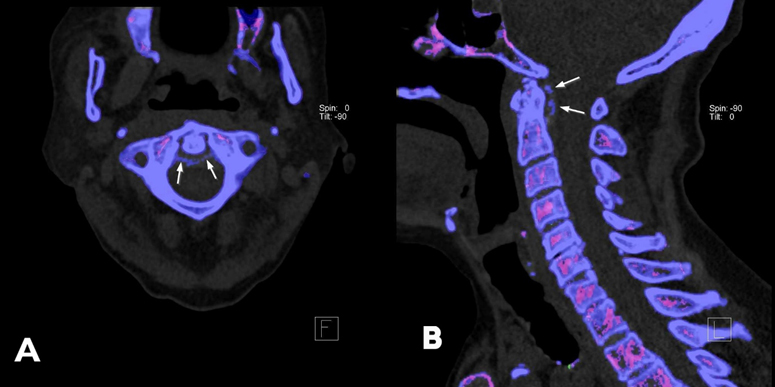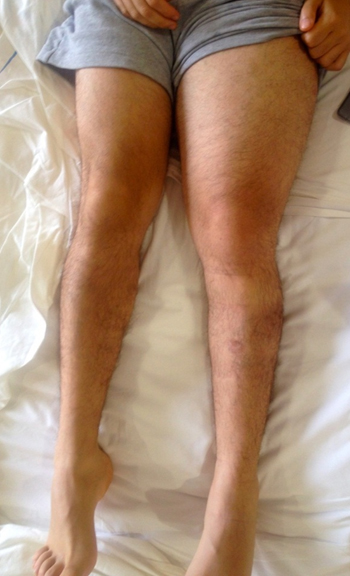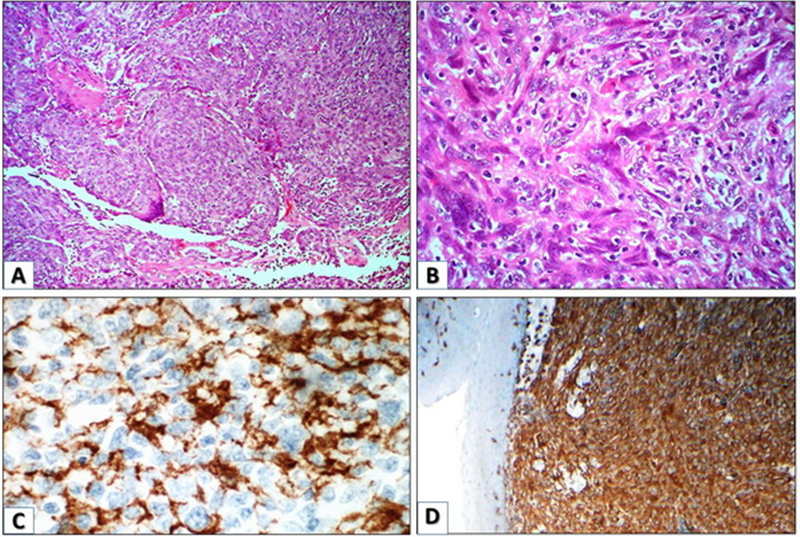 |
Case Report
A case of unilateral absent vas identified during vasectomy
1 General Surgery Registrar, Department of General Surgery, Austin/Northern Health, Melbourne, Victoria, Australia
2 Consultant General and Endocrine Surgeon, Department of General Surgery, Austin Health, Melbourne, Victoria, Australia
Address correspondence to:
Sara Mohammed Jinnaah
General Surgery Registrar, Department of General Surgery, Austin/Northern Health, Melbourne, Victoria,
Australia
Message to Corresponding Author
Article ID: 100071Z06SJ2019
Access full text article on other devices

Access PDF of article on other devices

How to cite this article
Mohammed Jinnaah S, Lam T. A case of unilateral absent vas identified during vasectomy. Case Rep Int 2019;8:100071Z06SJ2019.ABSTRACT
Introduction: Unilateral absence of the vas deferens is an uncommon congenital anomaly more commonly accounting for male infertility.
Case Report: Herein we describe the case of a 33-year-old father of three children who presented for elective vasectomy under general anesthesia. Routine vasectomy was carried out on the right. The vas deferens on the left was not palpable and scrotal exploration was performed, confirming an absent vas deferens on the left. Three month follow-up verified sterility, confirming that the patient did indeed have an absent vas on the left. In this article we discuss the implications and how to proceed when this anomaly is encountered in general surgical practice.
Conclusion: If unilateral absent vas deferens is suspected on clinical exam prior to vasectomy patients should undergo the procedure under a general anesthetic.
Keywords: Congenital anomalies of vas deferens, Unilateral absent vas deferens, Vasectomy
INTRODUCTION
Unilateral absence of the vas deferens is an uncommon congenital anomaly occurring in 0.5–1% of males [1],[2],[3] and accounts for 1–2% of male infertility [4]. It is fairly uncommon to encounter unilateral absent vas in a fertile male and in our literature review we discovered two other case reports describing the same [2],[5].
Here we present a case of a fertile male who underwent elective vasectomy and was identified to have unilateral absent vas deferens. We are presenting this case as a reminder of this anatomical variant and to share our experience with proceeding in such a situation, given vasectomy is a fairly routine low risk procedure that is more frequently being performed in the office under a local anesthetic.
CASE REPORT
A healthy 33-year-old male presented for elective vasectomy. He had fathered three children and had never been previously investigated for subfertility. His children were not known to suffer any illness.
The patient elected to have the vasectomy under a general anesthetic. The vas deferens on the right hand side was isolated following palpation and routine vasectomy was carried out without complication. On the left side, no definite vas deferens was palpable. An incision was made over the palpable cord structures, and a vas deferens was not identified on exploration the spermatic cord, the incision was then elongated, and the testis was explored in an attempt to find the vas deferens at its origin. A thorough examination of the testicle, testicular vessels, and epididymis revealed an absent vas deferens on the left. The testicle was returned to the left hemiscrotum and the operation completed.
The patient was informed of his diagnosis. A thorough family history revealed no cystic fibrosis and the patient declined genetic testing. An ultrasound scan was not performed.
The patient was reviewed in clinic in six weeks. He had recovered well from his operation and had two negative sperm samples and vasectomy was considered successful.
DISCUSSION
Congenital absence of vas deferens was first identified on autopsy in the 1700s and in 1870 it was described, by Reveredin, to be associated with multiple other congenital renal anomalies [6] as well as have an association with cystic fibrosis [4].
A review of published case reports demonstrate that a majority of these are identified during inguinal hernia repair in children, orchidopexy, or investigation for infertility in the male patient. Unilateral absent vas in the fertile male is rare, it has been described in the literature in two other case reports [2],[5]. In the case reported by Saitz and Thomas, the examination of the vas deferens was difficult prevasectomy and hence the decision was made for the patient to have their procedure under a general anesthetic, where unilateral absent vas was discovered, whereas in the case described by Khan and Novell, the patient underwent a vasectomy under local anesthesia and as the vas deferens was difficult to palpate intraoperatively the patient underwent a repeat procedure under a general anesthetic to confirm the absence of the vas deferens. Like our patient, both of these men were fertile and otherwise healthy, booked for elective vasectomy.
Unilateral absent vas deferens is an important anatomical variant that surgeons performing vasectomy should be aware of. Using our experience, and that from the two cases published in the literature, the authors recommend clinical examination when patients are booked in for vasectomy, and if there is difficulty palpating the vas deferens, the procedure should be carried out under a general anesthetic. Intraoperatively, if a vas is not identified the authors recommend exploration of the hemiscrotum to confirm absent vas deferens. Routine follow-up with semen analysis in 4–6 weeks, with barrier contraception use in the interim is recommended as is routine postvasectomy care to confirm sterility.
If the same situation is encountered during a vasectomy carried out under a local anesthetic, the cord structures should be explored as tolerated by the patient without delivery of the testis. If the vas is not identified, postoperative ultrasound scan should be performed to delineate scrotal anatomy and identify the vas, an abdominal ultrasound can also be performed at the same time as, if discovered, a renal anomaly would strengthen the diagnosis of a unilateral absent vas. If routine confirms sterility, the diagnosis of unilateral absent vas can be made. However, if there continues to be spermatozoa on the semen analysis, the patient can be given the option of scrotal exploration under a general anesthetic to identify the vas and complete vasectomy.
The authors did not feel that it was mandatory to perform a genetic test looking for cystic fibrosis in an otherwise healthy male who had completed his family and had healthy children. Many case reports and literature allude to the correlation between unilateral absent vas and unilateral renal agenesis. In our patient we did not perform one due to the reasons mentioned, but we would still recommend an ultrasound of the renal tract to the readers for completion as it is a simple and low risk test to perform [7].
As more of these cases are discovered, it would be interesting to see the success rate of vasectomies performed in patients found to have a unilateral absent vas intraoperatively.
CONCLUSION
Unilateral absent vas deferens is a rare finding in a fertile male. It is an important congenital anomaly to be aware of as a general surgeon performing elective vasectomy. If unilateral absent vas deferens is suspected on clinical exam prior to vasectomy, patients should undergo the procedure under a general anesthetic for scrotal exploration and confirmation of diagnosis.
REFERENCE
1.
Weiske WH, Sälzler N, Schroeder-Printzen I, Weidner W. Clinical findings in congenital absence of the vasa deferentia. Andrologia 2000;32(1):13–8.
[Pubmed]

2.
Khan ZA, Novell JR. A missing vas. J R Soc Med 2001;94(11):582–3. [CrossRef]
[Pubmed]

3.
Yu YD, Hong YK. A case of cryptorchidism with ipsilateral congenital unilateral absence of the vas deferens and contralateral renal agenesis. Case Rep Urol 2016;2016:2379793. [CrossRef]
[Pubmed]

4.
Dörk T, Dworniczak B, Aulehla-Scholz C, et al. Distinct spectrum of CFTR gene mutations in congenital absence of vas deferens. Hum Genet 1997;100(3– 4):365–77. [CrossRef]
[Pubmed]

5.
Saitz TR, Thomas AA. Unilateral segmental dysplasia of the vas deferens. Can J Urol 2018;25(6):9620–2.
[Pubmed]

6.
Shepherd G, Rajimwale A. Embryology of the absent vas supported by 2 cases of congenital unilateral absence of vas with varied associations. Urol Case Rep 2014;2(2):49–50. [CrossRef]
[Pubmed]

7.
Hall S, Oates RD. Unilateral absence of the scrotal vas deferens associated with contralateral mesonephric duct anomalies resulting in infertility: Laboratory, physical and radiographic findings, and therapeutic alternatives. J Urol 1993;150(4):1161–4. [CrossRef]
[Pubmed]

SUPPORTING INFORMATION
Author Contributions
Sara Mohammed Jinnaah - Conception of the work, Design of the work, Acquisition of data, Analysis of data, Drafting the work, Revising the work critically for important intellectual content, Final approval of the version to be published, Agree to be accountable for all aspects of the work in ensuring that questions related to the accuracy or integrity of any part of the work are appropriately investigated and resolved.
Tracey Lam - Conception of the work, Design of the work, Revising the work critically for important intellectual content, Final approval of the version to be published, Agree to be accountable for all aspects of the work in ensuring that questions related to the accuracy or integrity of any part of the work are appropriately investigated and resolved.
Guarantor of SubmissionThe corresponding author is the guarantor of submission.
Source of SupportNone
Consent StatementWritten informed consent was obtained from the patient for publication of this article.
Data AvailabilityAll relevant data are within the paper and its Supporting Information files.
Conflict of InterestAuthors declare no conflict of interest.
Copyright© 2019 Sara Mohammed Jinnaah et al. This article is distributed under the terms of Creative Commons Attribution License which permits unrestricted use, distribution and reproduction in any medium provided the original author(s) and original publisher are properly credited. Please see the copyright policy on the journal website for more information.





